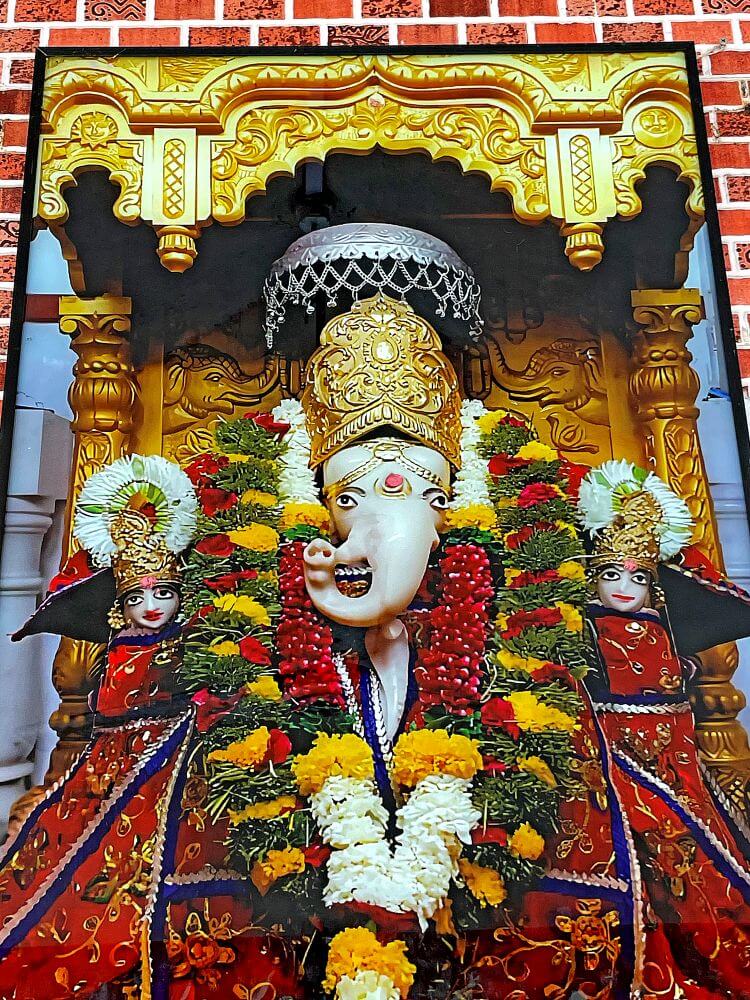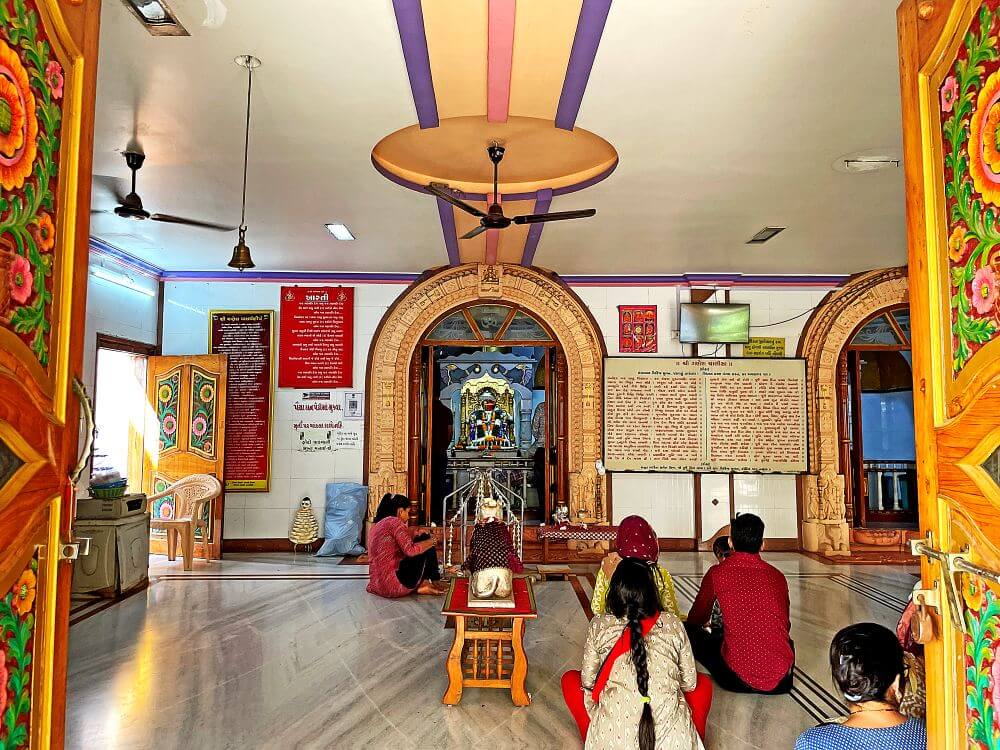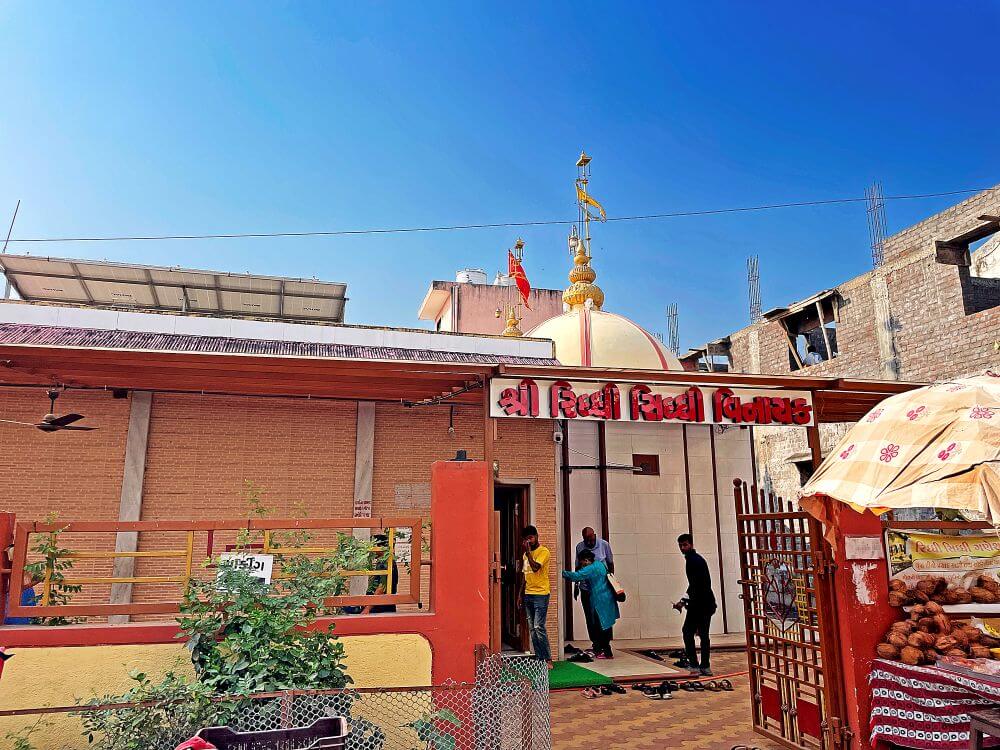
Valod, formerly known as Vatapalli, was once part of the Dandakaranya region. Situated on the banks of the Valmiki River is the ancient temple of Riddhi-Siddhi Vinayak. The temple here was built during the Peshwa era. There was profound devotion to Vinayak among the Peshwas. During that time, this Ganesh was adorned with a Peshwa turban, earning him the name ‘Pagadi Dhari Ganesh’. Devotees believe that this Ganapati with a right trunk is awakened, leading to a constant influx of Gujarati and Marathi-speaking devotees for his darshan.
Valod is mentioned in ‘Ain-e-Akbari’, authored in the 16th century by Abul Fazal, one of Emperor Akbar’s nine jewels. According to mythology, Sage Valmiki performed penance here, thus giving the river its name. Near the Ganesh temple, by the Mahadev temple, is believed to be the site of an ashram belonging to one of Valmiki’s disciples.
A historical tale recounts a severe famine nearly 375 years ago, causing widespread hunger and death among cattle. To halt the calamity, local Brahmins resolved to build a Lakshmi-Narayan temple as atonement. However, lack of funds posed a challenge. At that time, the Marathi wife of a Gujarati Brahmin named Desai offered to fund the temple with the condition of installing her beloved deity, Ganesh, there.  Agreeing to her condition, the temple was constructed. Another tale narrates how Mughal soldiers, aiming to desecrate the temple, struck Ganesh’s idol with a sword, causing blood to flow. Terrified, they fled. A shepherd nearby saw this, swiftly stitched the wound and stopped the bleeding. It is said that these marks remain visible today.
Agreeing to her condition, the temple was constructed. Another tale narrates how Mughal soldiers, aiming to desecrate the temple, struck Ganesh’s idol with a sword, causing blood to flow. Terrified, they fled. A shepherd nearby saw this, swiftly stitched the wound and stopped the bleeding. It is said that these marks remain visible today.
The temple has undergone several renovations, with the recent restoration giving it its present magnificent form. The temple structure consists of a Darshan Mandap (viewing hall), Sabha Mandap (assembly hall) and Garbha Griha (sanctum). The sanctum has a dome-shaped spire. To access the viewing hall, there is a wide path with about ten steps leading up. Once at the top, a small Hanuman temple is found on the right side.  The Sabha Mandap is spacious, featuring two large wooden entrances, with an image of Riddhi-Siddhi Vinayak on the central wall. In front of the sanctum is a marble statue of Mushak (mouse), Ganesh’s vehicle, holding a sweet (Modak). Facing this is a Shiv Lingam shaded by a serpent, continuously bathed from a vessel above.
The Sabha Mandap is spacious, featuring two large wooden entrances, with an image of Riddhi-Siddhi Vinayak on the central wall. In front of the sanctum is a marble statue of Mushak (mouse), Ganesh’s vehicle, holding a sweet (Modak). Facing this is a Shiv Lingam shaded by a serpent, continuously bathed from a vessel above.
The entrance archway to the sanctum has elaborate carvings. Inside, two elephants flank the marble canopy, beneath which sits a golden-hued, ornately decorated marble idol of Ganesh, depicted with a rightward trunk. On both sides of Ganesh stand his consorts, Riddhi and Siddhi. The idol wears a golden crown and is sheltered by a golden umbrella. To the right of Ganesh’s sanctum is a shrine dedicated to Lakshmi-Narayan, accompanied by a small marble statue of a cow and calf.
Devotees believe that sincere worship of Ganesh here fulfills all their wishes, attracting visitors from various parts of Gujarat. On Tuesdays and during Angarki Chaturthi, hundreds walk here for darshan. Special worship ceremonies including Ganesh pujan (worship), Ganesh Yajna (sacred fire ritual) and chanting are held on Angarki Chaturthi. After formal worship at night, prasad (blessed food) is distributed following moonrise; this event is referred to as ‘Ochhav’. Booking for ‘Ochhav’ must be done months in advance due to high demand.
